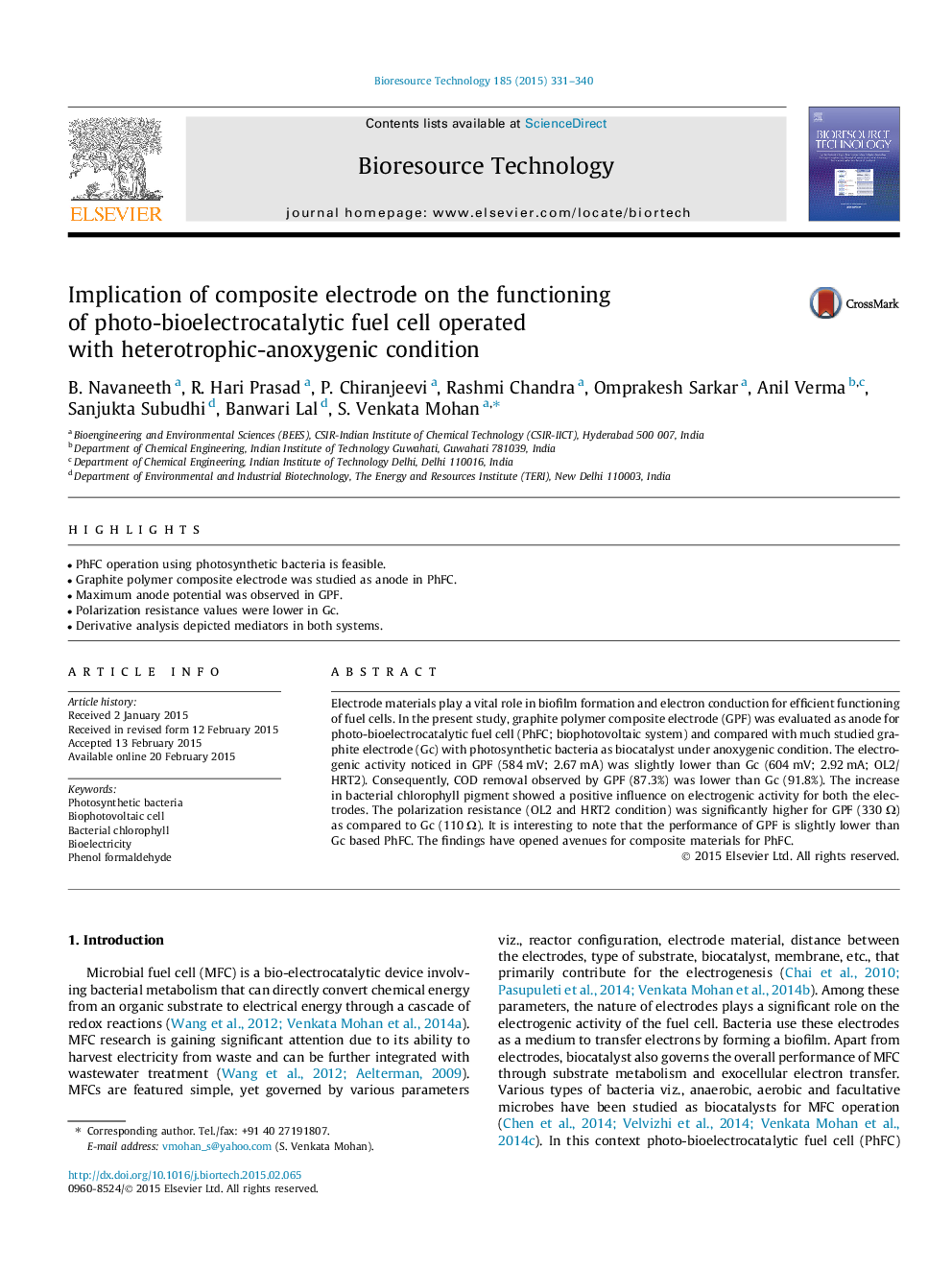| Article ID | Journal | Published Year | Pages | File Type |
|---|---|---|---|---|
| 679824 | Bioresource Technology | 2015 | 10 Pages |
Abstract
Electrode materials play a vital role in biofilm formation and electron conduction for efficient functioning of fuel cells. In the present study, graphite polymer composite electrode (GPF) was evaluated as anode for photo-bioelectrocatalytic fuel cell (PhFC; biophotovoltaic system) and compared with much studied graphite electrode (Gc) with photosynthetic bacteria as biocatalyst under anoxygenic condition. The electrogenic activity noticed in GPF (584 mV; 2.67 mA) was slightly lower than Gc (604 mV; 2.92 mA; OL2/HRT2). Consequently, COD removal observed by GPF (87.3%) was lower than Gc (91.8%). The increase in bacterial chlorophyll pigment showed a positive influence on electrogenic activity for both the electrodes. The polarization resistance (OL2 and HRT2 condition) was significantly higher for GPF (330 Ω) as compared to Gc (110 Ω). It is interesting to note that the performance of GPF is slightly lower than Gc based PhFC. The findings have opened avenues for composite materials for PhFC.
Related Topics
Physical Sciences and Engineering
Chemical Engineering
Process Chemistry and Technology
Authors
B. Navaneeth, R. Hari Prasad, P. Chiranjeevi, Rashmi Chandra, Omprakesh Sarkar, Anil Verma, Sanjukta Subudhi, Banwari Lal, S. Venkata Mohan,
